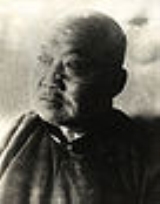
that lives mainly in the countries of Mongolia
, China
, and Russia
. In China, ethnic Mongols can be found mainly in the central north region of China such as Inner Mongolia
(smaller number of Mongols can also be found in Xinjiang
in northwest China). The Buryat
branch of the Mongol ethnic group can be found in the autonomous republic of Buryatia
, Russia. Ethnic Mongols are bound together by a common language
and culture
.
1215 Beijing, then under the control of the Jurchen ruler Emperor Xuanzong of Jin, is captured by the Mongols under Genghis Khan, ending the Battle of Beijing.
1238 The Mongols burn the Russian city of Vladimir.
1240 Mongol invasion of Rus: Kiev under Danylo of Halych and Voivode Dmytro falls to the Mongols under Batu Khan.
1241 Kraków is ravaged by Mongols.
1258 Baghdad falls to the Mongols, and the Abbasid Caliphate is destroyed.
1260 The Mamluks defeat the Mongols at the Battle of Ain Jalut in Palestine, marking their first decisive defeat and the point of maximum expansion of the Mongol Empire.
1294 Temür, grandson of Kublai, is elected Khagan of the Mongols and Emperor of the Yuan Dynasty with the reigning titles Oljeitu and Chengzong.
1307 Külüg Khan enthroned as Khagan of the Mongols and Wuzong of the Yuan.
1332 Rinchinbal Khan, Emperor Ningzong of Yuan became the Khagan of the Mongols and Emperor of the Yuan Dynasty, reigning for only 53 days.
1409 Battle of Kherlen, the second significant victory over Ming China by the Mongols since 1368.

